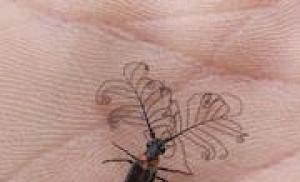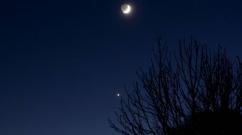Yin Yang Philosophy. Yin and Yang symbol - real help to a person
Yin-Yang is the basic principle of the law of the universe. Everything in our world - physical objects or living beings - comes from the interaction of the energy of the two principles of Yin and Yang. Yin and Yang energies make everything in our world unique and different from each other.
Yang- this is an active principle, fire, sun, warmth, summer, sky, light, masculine.
Yin- this is a passive beginning, water, cold, moon, earth, soft, dark, feminine.
If Yang energy predominates in a person, then he will be born a man, and if Yin energy predominates, then he will be born a woman. Therefore, the Yin-Yang energy is mutually complementary, and at the same time is the opposite of each other, and cannot exist separately without each other.
Yin Yang Taichi Symbol
Taichi which can be seen in all feng shui books describes the interaction of two principles. Yang energy is the light area of the symbol, and Yin is the dark one.

Yin Yang Taichi Symbol
The circles of the Yin-Yang symbol mean endless movement. Yin and Yang are inter-arising, interdependent, and constantly transforming, one into the other. One beginning cannot exist without the other, each contains a particle of the other. As night turns to day, and day to night. Birth ends with death, and death passes into birth. Friends become enemies and enemies become friends. Both parts are one, and are in constant change and movement. Maintains balance and balance. This is nature - Yin-Yang, which shows that everything in our world is relative.
The fundamental principle of Feng Shui seeks to balance Yin and Yang to create a harmonious flow of life in your home. Therefore, when planning the interior of an apartment or house, it is imperative to take into account these factors of Yin and Yang, because the feng shui of your home should be balanced in terms of these principles.
Yin influence factors in the interior of the house- these are screens, muted and dark colors, a refrigerator, silence, distant rooms in the house, a recreation room, a bedroom, a bed, the north side, a toilet.
Yang influencing factors in the interior of the house- this is a living room, loud music, an office, a noisy road, light and bright colors, the main entrance, fresh flowers, lighting and heating devices, an entrance hall, a gym, the south side - everything that can be compared with active activity.
 According to the basic principle of Feng Shui - harmony and balance of Yin-Yang, there is no need to make the premises unnecessarily dark, gloomy, yin. But if, on the contrary, you constantly turn on loud music and hang all the walls with different bright photo posters, by this action you will create an excess of Yang energy, which will also have a detrimental effect on the favorable creation of Feng Shui in the house. In both cases, there will be an imbalance. These are the fundamental principles of feng shui and must be taken into account.
According to the basic principle of Feng Shui - harmony and balance of Yin-Yang, there is no need to make the premises unnecessarily dark, gloomy, yin. But if, on the contrary, you constantly turn on loud music and hang all the walls with different bright photo posters, by this action you will create an excess of Yang energy, which will also have a detrimental effect on the favorable creation of Feng Shui in the house. In both cases, there will be an imbalance. These are the fundamental principles of feng shui and must be taken into account.
Using the principles of Yin-Yang, we can take into account the purpose of the rooms, for example, in the bedroom it will be appropriate to use yin energy, muted tones, low furniture, twilight.
For a study or living room, it is better to use the Yang factors - these are bright lighting, tall furniture, light colors.
Furnishing your home with Feng Shui, according to the principles of Yin-Yang, harmoniously and skillfully, you will quickly begin to notice how all your rooms in the house will begin to help you on their own - in the bedroom you will have a wonderful rest and you will quickly gain strength, and in your office or at your desk it will be productive and efficient work and quickly achieve success in your business!
The concepts of Yin-Yang came to us from China - that is, from the East. After all, both Western and Eastern civilizations from time immemorial were in contact, complementing each other. But, unfortunately, not everyone understands what the Chinese symbol Yin-Yang means. And, even more so, many do not know how you can use the teaching about the symbol in your life.
The energy of "qi" and the determining parameters of its development
To understand what the yin yang sign can mean, one should turn to the famous "Book of Changes" - the ancient Chinese treatise "I Ching". The cosmogonic meaning, that is, referring to the universe, lies at the basis of the Yin and Yang signs. Understanding the meaning of this ancient symbol is an understanding of the main law of the unity and struggle of opposing principles.
It was this law that was the key to the basis of dialectical materialism, which was studied by Soviet students not so long ago! This means that it was not discovered at all in our time, but much earlier - somewhere in the 7th century BC by Chinese philosophers.
The ancient Chinese sages interpreted Yin-Yang as a symbol of the unity of the whole, as opposite parts of it, interacting with each other, mutually transforming into each other, making up together a common, strongest energy of "qi". This inseparable connection of the parts determines the development of the “qi” energy.
What does the famous Chinese character look like?
What, after all, does the Yin-Yang sign mean? Everyone, considering this symbol, highlights its main features, characteristic features:
- The components of the symbol, Yin and Yang, are enclosed in a closed circle, which means the infinity of everything on Earth.
- The equal division of the circle into two halves, painted in opposite colors (white and black), emphasize the equivalence of Yin and Yang, their opposite.
- The division of the circle not by a straight line, but by a wavy line, creates, as it were, the penetration of one opposite into another, their mutual influence of one sign on another. After all, increase one sign - the other will undoubtedly be reduced.
- The influence of one sign on another is also emphasized by the symmetrical arrangement of points - "eyes" - of the opposite color, that is, the color of the "enemy". This means that the Yin sign "looks at the world with the eyes" of the Yang sign, and the Yang sign perceives life with the "eyes" of the Yin sign.
 That is, the world is created from opposites, which in combination can make up a single whole. Whether these principles are in unity, friendship and harmony, whether they find a consensus in the struggle - only their inextricable interaction carries development.
That is, the world is created from opposites, which in combination can make up a single whole. Whether these principles are in unity, friendship and harmony, whether they find a consensus in the struggle - only their inextricable interaction carries development.
History of the symbol
It is assumed that the original meaning of the symbol depicting Yang and Yin goes back to the imitation of a mountain: one side is illuminated and the other is shaded. But this cannot go on forever: after a certain period, the sides will change the illumination.
For example, there are such "decryptions":
- earth is sky,
- top bottom,
- warm - cold
- male - female,
- good - evil,
- good is bad
- harmful - useful,
- light - dark,
- active - passive
Something about these interpretations has a certain meaning. But most scientists do not recommend giving the symbol an ethical meaning. After all, the symbol means cosmogonic natural opposites, but not moral ones. Therefore, one should not talk about the struggle and unity of good, good and useful on the one hand and bad, evil and harmful on the other.
Charm with the Chinese symbol Yin-Yang
Amulets and amulets help people, energizing them, protecting them from all evil. One of the strongest amulets is the one in which the Yin-Yang symbol is present. But an important condition for the help of any amulet is the following fact: the keeper (in this case, an amulet, talisman or amulet) must be "tuned" to the one who uses it. Otherwise, such a talisman can pose a threat equal to the strength of the expected help.
The sign of the Chinese symbol Yin-Yang carries universal forces that are continuously and eternally passing into each other. It also means active principles, in which wood and fire correspond to the Yang sign, and metal and water correspond to the Yin sign. The earth is neutral in this teaching.
In addition, it should be borne in mind that Yan sign carries the meaning of light, active, masculine, dominant. A yin sign contains the meaning of the dark, secret, feminine, calm. However, remembering about the unity of opposites, even one, taken concretely, a person cannot be ranked in one category or another. Each of us has both Yin and Yang forces. And the more in balance these forces are, the more successful the individual is.
 It is the amulet with the Yin-Yang symbol that helps balance two opposite energies, suppressing the dominant and strengthening the weak.
It is the amulet with the Yin-Yang symbol that helps balance two opposite energies, suppressing the dominant and strengthening the weak.
The amulet gives the wearer energy balance, helps to find a soul mate, to achieve success and harmony. After all, the Yin-Yang symbol carries the meaning of not only struggle and unity, incessant movement and active energy, but also harmony, beauty.
Yin and Yang forces in everyday life
By and large, the struggle and unity of Yin and Yang is everywhere. Anyone who is not clear what this statement means should ponder. Here is our food. It consists of warm food and cold, sweet and bitter, protein and vegetable. And any diets that restrict a person, for example, only raw foods or only vegetarian dishes, upset the balance, close the path to the development of the "Qi" energy.
Speaking of Yin and Yang, they note that the meaning of a symbol is in the smooth transition of one sign to another. Therefore, in a person's dwelling, both directions should smoothly transition one into the other. Otherwise, the state of mind of the individual is subjected to strong stress, which does not contribute to either the achievement of his goals and success in life, or the improvement of his health. The exceptions are institutions - the beginning of Yin or Yang in its pure form dominates there. In a home, which should help to gain energy, relax, have fun and enjoy harmony, the presence of both principles is necessary.
"Bobruisk Courier" returns to its "historical" rubric "Yin-Yang", which is more than 20 years old, and which in recent years has been undeservedly "forgotten" by us.
The relationship between man and woman; internal forces, energies that allow us to live and develop; ways to achieve harmony with yourself and others ... And much, much more ... Follow our publications.
Yin-Yang is with you again!
Peace, tranquility, prosperity to your home!
Editorial staff
Yin and Yang - feminine and masculine. This concept came to us from China. The ancient Chinese sages interpreted Yin-Yang as a symbol of the unity of the whole, the opposite parts of which merge into each other, making up the strongest energy together.
The original meaning of Yin and Yang is the shady and sunny side of the mountain. This meaning perfectly reflects the essence of these two principles. They represent just different sides of the same mountain. Their differences are determined not by the inner nature of the slope itself, but by the third force (the sun), which alternately illuminates one or the other side.
And now - in more detail about each of the components of the Yin-Yang symbol.
Yin
The Moon corresponds to the feminine energy in astrology. Therefore, the feminine principle is night, darkness, abyss, cold, passivity, introversion (emphasis on the inner). This is where the principle of fluidity and flexibility finds its place. As a result, the predominance in women of such qualities as gentleness, tenderness, the ability to forgive and accept. Feminine power is the power of intuition and emotion.
Yin energy can be compared to water: water has no form, it takes the form of the surrounding world, fills with itself.
Also, the earth is endowed with Yin energy to a large extent: it humbly cultivates in itself all the seeds that have fallen into it from outside. She waits idle to be used. She accepts.
Yin energy is inert: it is simply in space and waits for something to give it a vector of motion.
Yang
Male energy in astrology corresponds to the Sun. The masculine principle is day, fire, activity, dedication, dynamics, categoricalness, leadership, extroversion (emphasis on the outside). The power of the masculine principle is the power of the mind.
Yang energy gives motivation and desire to act. It has a vector and aspiration.
The masculine principle is the Idea, the Seed. He needs a land that will grow this Seed in itself. Yang energy gives.
But this does not mean at all that a woman is filled exclusively with Yin energy, and a man - with Yang energy. In fact, both energies are present in each of us, regardless of gender. But for the harmony of the personality, it is important that women have more feminine energy, and men - masculine. Otherwise, an imbalance of energies will occur, which can lead to unpleasant consequences. Let's talk about them in more detail.
There is too much Yin in a woman.
1. Loss of physical fitness. Extra weight appears or the muscles become sluggish and weak.
2. Outbursts of uncontrollable emotions. Sadness, depression, tantrums, resentment, apathy become a constant companion of a woman if she lacks Yang energy.
3. Laziness, unwillingness to do anything. Such women will always want to take a horizontal position: lie on the sofa and do nothing. After all, Yin is peace, earth.
4. Lack of goals in life. Since the Yin energy has no vector, then a woman in whom there is too much of this energy will become inert and lack of initiative.
5. Dissatisfaction with everyone and everyone. Yin has no goal, therefore no result can be achieved. Such a woman will not know what she wants, and everything that she has will seem to her not what she would like.
There is too much Yang in a woman.
1. Male physique. Large shoulders, narrow hips, lean muscles - this type of figure is often caused by an overabundance of Yang energy in a woman. And if such a woman begins to gain weight, then this happens, as a rule, according to the male type: her arms grow fat in the area of \ u200b \ u200bthe shoulders and the belly grows.
2. The habit of “building everyone”. A woman with an overabundance of energy Yan loves to command, does not tolerate disagreement with her opinion.
3. Tension. Yang is the energy of constant tension. It is very difficult for a woman who is dominated by this energy to relax and turn off her brain.
4. Inability to accept. Yan energy is a giving energy, not a receiving one. It is not surprising that a woman with an overabundance of this energy is ready to give up the “last shirt”.
5. Sexual deviations. The desire for rough sex with elements of violence is a way of harmonizing oneself for women with an imbalance of energies.
The man has too much Yang energy
1. Excessive passion for your body. The activity that is contained in the Yang energy will definitely find a way out in sports. And if a man has increased this energy, then he will not get out of the gym for days, bringing his body to the ideal.
2. Dominance. A man with an overabundance of Yan energy wants to dominate always and over everyone. Great difficulties will arise in relations with the authorities, because obeying for such a man is sheer torture.
3. Aggression and rudeness. An overabundance of Yan energy transforms such good qualities as determination and confidence into obstinacy and self-confidence. Attempts to disagree with a man who has an increased Yang energy level are fraught with outbursts of aggression and rudeness on his part.
There is too much Yin energy in a man.
1. Passivity. It is not surprising that a man with a predominant Yin energy will be overweight and have little income. After all, the activity and determination inherent in the Yang energy will be blocked by the passivity and inertia of the Yin energy.
2. Softness. The principle of fluidity and flexibility inherent in Yin energy will lead to the fact that a man in whom this energy dominates will try to avoid sharp corners, not enter into conflicts, and make compromises.
3. Inability to give. Such a man does not feel like a breadwinner. He has absolutely no desire to give something, but to receive something without making efforts, he will not refuse.
Balance is a very fragile thing. It can be difficult to achieve a balance of energies and find harmony. But not easy does not mean impossible. We will tell you about the ways of personality harmonization in our next article under the heading "Yin-Yang".
The Yin-Yang symbol depicts the universe, consisting of two opposites, Yin and Yang, which form a whole only in a single combination. Two dots in the symbol mean that each of the two energies at the highest stage of its realization already contains the seed of its opposite and is ready to transform into it.
A healthy body is based on a state of perfect balance between Yin and Yang and the Five Basic Elements.
Oriental medicine- Chinese, Japanese, Tibetan, etc., - based, among other things, on the philosophy of the balance of Yin and Yang, helps to restore the harmony created by nature in the body. When the harmony between Yin and Yang is disturbed, the state of balance can be restored through meditation, acupuncture, corrective diet, qigong, tai chi, shiatsu, or various combinations of these methods. Eastern doctors seek to treat not the external symptoms of diseases, but their root causes, which are the violation of the internal balance, while demonstrating such a "clairvoyance" that a person with a Western mentality may seem like magic.
The Yin and Yang Principle- Eastern perception of reality, which implies both the material and the spiritual world as a unity of two opposite and at the same time interdependent forces.
Yin and Yang are opposites that form a whole, they depend on each other, because they exist only in relationship with their opposite.
Basic properties of Yin and Yang
| Yin | YAN |
| Feminine | Masculinity |
| Matter | Energy |
| Passivity | Activity |
| End | Start |
| Earth | Sky |
| Bottom | Top |
| Night | Day |
| Winter | Summer |
| Humidity | Dryness |
| Softness | Hardness |
| Horizontal | Vertical |
| Compression | Extension |
| Attraction | Repulsion |
The Yin-Yang sign symbolizes the universal law of change. He shows us that one thing, reaching its greatest value, invariably passes into another. Winter gives way to summer and summer to winter. Movement gives way to calmness, and calmness to movement.
Tears turn into laughter, and laughter turns into tears. Life leads to death, and death revives life again.
The Yin-Yang sign, each part of which has a point of opposite color in the center, represents the two poles containing the essence of opposition in the inner core.
In other words, there is no absolutely pure Yin or Yang, white or black, feminine or masculine, dark or light, good or evil.
A woman must have masculine qualities, and a man - feminine. Both white and black always have gray tones.
A bad deed is never just bad, and a good deed can have bad consequences.
Manifestations of Yin and Yang in the Human Body
YIN YANG
Front side Back side
Left side Right side
Lower torso Upper torso
Legs Hands
Solid organs Hollow organs
Flexion Extension
Calm Movement
Inhale exhale
Yin and Yang are not absolute concepts. They are relative, like everything else in the world. Therefore, they can be used to describe the relationship between various phenomena of the material and spiritual world.
For example, the chest is considered Yin in comparison to the back, but in relation to the pelvis, the chest is Yang.
Or winter in relation to summer is considered Yin, but in comparison with cosmic cold it is Yang.
Manifestations of Yin and Yang in the psychological characteristics of a person
Yin Yang
Intuition Intelligence
Contemplation Response
Calm Excitement
Introversion Extroversion
Pessimism Optimism
Conservative Progressive
Silence Talkativeness
The Yin-Yang sign shows a change in phenomena. This is a description of the change in phenomena, not a judgment about them.
The sign reflects how the opposites depend on each other, how they affect the OTHER on the other, and how they ultimately pass into each other.
To understand the nature of the two fundamental principles and their impact on human health, you need to remember which diseases and ailments Chinese medicine attributes to Yin and Yang.
Yin and Yang Disorders
YIN YANG
Chronic diseases Acute diseases
Internal diseases Diseases of the skin and sensory organs
Degenerative diseases Infectious diseases
Edema Inflammation, fever
Paralysis Convulsions
Diarrhea Constipation
Persistent deep pain Attacks of superficial pain
Widespread pain Localized pain
Dull and pressing pain Sharp and throbbing pain
Nocturnal bouts of pain, at rest Daytime bouts of pain, with movement
Life energy qi
Qi is the Chinese name for life energy, or life force. The Japanese call it Ki, and in Yoga it is called Prana.
The concept of the life force circulating in the air, plants, animals and in the human body already existed in the most ancient cultures. This is the energy that is found in all forms of matter and is concentrated in living organisms, "life outside the atom."
More than three millennia ago in India and China were developed systems of treatment and meditation aimed at increasing the vital energy in people in order to prevent and treat disease. The Chinese distinguished different types of Qi life force.
For a deeper understanding, we need two more important concepts related to the energy of Qi - Shi and Xu. Shi means fullness or excess energy, which in most cases causes Yang symptoms such as inflammation, severe pain, and fever.
Xiu means depletion or lack of energy and manifests itself in Yin symptoms: chills, chronic pain and swelling.
With the help of the meridian exercises described in this book, you can eliminate excess or lack of Chi energy and bring it into balance in the various meridians and their corresponding organs. Thanks to this, health is strengthened, well-being improves and old age is postponed.
Meridians and Organs of Chinese Medicine
Meridians are the channels through which vital energy, Qi, flows. The places where you can feel this flow of energy are called acupuncture points.
Traditional Chinese medicine views the meridians as a network that connects the inside and the outside: the internal organs and surface of the body, tissues and spirit, Yin and Yang, earth and sky. This system consists of energy channels located mainly along the vertical axis of the body, Liu vessels and a special channel Dai Mai, which surrounds the waist like a belt.
Western doctors compare the Chinese system of meridians of the human body with the system of meridians of the Earth: the meridians of the body correspond to the meridians of the Earth, the Liu vessels to the parallels, and Dai Mai to the equator.
Already in Huangdi Nei Jing, a treatise on the internal medicine of the Yellow Emperor Huandd? dating from around the 3rd century BC, the location of the meridians and the effects on acupuncture points have been accurately described. In this treatise, the meridians are compared with the great rivers of China that wash over the earth.
The concept of a meridian is expressed by the Chinese character "jing", meaning "river, road, path" and "blood vessel." The meridian system includes the meridians of the twelve Organs, called the twelve permanent channels.
Each of the twelve meridians is associated with a specific Authority and connects it with other Organs.
Twelve meridians form pairs. Each Yin meridian is associated with the Yang meridian of the same element.
These pairs are called Dual Meridians, since the flow of Chi in the meridians is balanced by two “gates”. These "gates" are the vessels of Liu. Their main task is to ensure the same level of energy flow in the Dual Meridians. This reduces the risk of the formation of excess or lack of Qi in one of the meridians, and, consequently, in the corresponding Organ.
The good functioning of the meridians and blood vessels of Liu ensures a full circulation of Qi energy in the body and, therefore, sufficient nutrition and safety of all Organs and the coordination of their work. It is imperative to mention that the Chinese ideas about the internal organs and tissues of a person differ from those accepted in the West. This difference is primarily due to the fact that the Chinese tradition does not separate body and soul.
Chinese medicine claims that in addition to purely physical functions, each organ has an emotional, mental and spiritual function. That is, the soul and mind exist in every cell of the body and in its energy field. Therefore, the internal organs are viewed more as a unity of body, mind and spirit than as anatomical formations with certain physiological functions. Each organ affects the personality as a whole, and the interaction of all organs determines the thought and sensory processes.
Since internal organs are not considered from a physiological point of view, but based on the unity of body, mind and spirit, anatomical definitions in Chinese medicine differ from the concepts accepted in Western medicine.
To avoid confusion, all names of organs in their Chinese sense are capitalized. For example, the organs that in Western medicine are called the stomach, duodenum and the initial section of the small intestine are simply called the Stomach in Chinese medicine, since the process of digestion and transport of nutrients from the gastrointestinal tract into the blood is considered the main task of the Stomach. And what is called the Spleen in Chinese medicine includes not only the spleen, but also the pancreas "and the entire lymphatic system, that is, the organs that form the human immune system. The physiological purpose of the Spleen is the general protection of the body.
Chinese medicine distinguishes between six yin and six yang organs.
Yin organs are called Zhang, which means hard, dense. Another name for the Zhang organs is storage organs, since, in addition to performing their physiological functions, they also produce, accumulate and transform various forms of Qi energy. Zhang's organs are the Heart, Pericardium, Liver, Kidneys, Lungs, and Spleen.
The Yang organs are called Fu, which means hollow. The main tasks of Fu organs are intake and digestion of food, assimilation of nutrients and excretion of toxins. Fu organs include Stomach, Small Intestine, Large Intestine, Gallbladder, Bladder, and Triple Warmer.
The function of the Triple Warmer is to regulate body temperature, coordinate the activities of the respiratory and circulatory systems, the digestive and genitourinary systems.
In ancient Chinese Taoism, polar cosmic principles. Yin is the feminine, passive, weak and often destructive side of reality. Yang is a masculine, strong and creative principle. Their descent is from the ineffable Tao.
Excellent definition
Incomplete definition ↓
YANG and YIN
the interconnected concepts of the ancient Chinese philosophical school of Taoism, as well as the Chinese symbol of the dual distribution of forces, including the active or masculine principle (I.) and the passive, or female, principle (I.). It has the shape of a circle divided in two by a sigma-like line; the two parts thus formed acquire a dynamic intention that does not exist when division is carried out by means of a diameter. (The light half represents the power of I., and the dark one means I.; however, each of the halves includes a circle - cut from the middle of the opposite half, thus symbolizing the fact that each of the modes must contain the germ of its opposite.) that nature and man are generated by the Earth and Heaven. At the moment of the beginning of Existence, transparent air, ether, in the Void separates from Chaos, transforms and gives rise to Heaven; heavy and muddy air, precipitating, forms the Earth. The connection, cohesion of the smallest particles of Heaven and Earth is carried out with the help of I. and I., forces interacting and mutually overcoming each other, as well as the principles of Evil and Good, Cold and Heat, Darkness and Light. The interdependence and interdependence of I. and I. were described in the context of the growth of one in the other, passing the stage of the limit of the predominance of one, then the other and vice versa. The endless process of world movement, active being is lined up in concentric circles around the conditional center of the universe, associated for a person with a sense of harmony, confidence, peace. I. (Earth) and I. (Sky) give rise to four seasons and all things of the world (both inanimate objects and animate beings), acting as a substance of "vital energy" ("qi" - Chinese, "ki" - Japanese. ). The interaction of I. and I. produces five main elements that can transform into each other: wood, earth, water, fire, and metal. Endless sky, denoted by an endless line (circle); the earth, due to its limited space, described by the sign of a square, coupled with a person, whose symbol is a triangle - the phenomena of the sacrament of life, passing through a series of metamorphoses ("captured" by the magic signs-symbols "gua") - in the center of their classic image in the form of a circular diagram and the "monad" of life is placed - the mutually complementary I. and I. They are the fundamental principle of all changes, the supporting structure of the "Great Limit" ("Taits-zy") - an inescapable source. I. acts as an "internal" life, an advancing, creative masculine principle; AND. - as an external world, receding, crumbling - the female hypostasis of the dual basis of being. The internal organs of a person and their aggregates (complexes) are subdivided into I.- and I.- "subsystems". I.-organs are subject to the effects of states of consciousness and unconscious mental impulses, the health of the organism is determined by I.-organs. Fear, anxiety, excitement (and other I.-influences) are capable of destructively influencing I.-organs. Mutual transformation, complementarity, mutual enrichment, mutual absorption, mutual creation of everything and everything - I. and I. - everything that can be understood and comprehended by a person, and that which lies beyond his understanding, is the basic law of Tao. The theory of I. and J. originated in the middle of the 1st millennium BC. In the tradition of modern sexual and erotic urban folklore of the European type, the symbol of I. and I. acquires a meaning that significantly complements the reference behavioral models. It postulates not only an indissoluble unity, mutual responsibility and the need for harmony of loving people, but also proclaims the high value of the readiness of individuals in love for self-transformations (not necessarily conscious and rationally motivated) in order to achieve compliance with the spontaneous mental and physical metamorphoses of their loved one initiated by the external environment, as well as truly human the meaning and sound of the phenomenon of presence in "I. - I." - the unions of acquired and internalized spiritual traits of each other.
Excellent definition
Incomplete definition ↓













